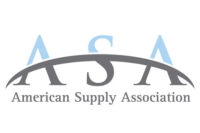The PVF category is composed of wholesalers that derive over 50 percent of sales from PVF products. A separate category of mixed plumbing/PVF firms describes those that derive more than 50 percent of sales from those two categories combined, but not from either one. The plumbing/PVF combined category reported markedly different sales performance, a 4.2 percent increase in 2002 over 2001, up from 2.3 percent the prior year. This category reported only one year of declining sales over the last 20 years, in 1990. Almost certainly the plumbing sector, especially residential plumbing, buoyed the fortunes of these firms.
Profitability also took a tumble as PVF wholesalers reported a miniscule 0.9 percent in after-tax profit, down from 1.5 percent the prior year. Combined plumbing/PVF firms saw their profitability remain the same as the previous year, 1.1 percent.
Trends are harder to detect in the bottom line profitability category, which shows relatively little variation year by year. For instance, over the last 20 years, ASA's OPR shows PVF firms reporting after-tax profits ranging from a median 0.7 percent on the low side to 2.8 percent in the highest year, 1988. The combined plumbing/PVF category shows even less variation, ranging between 0.7 percent and 1.8 percent over the last two decades.
"Real" Profitability
The OPR offers detailed assessments of wholesaler financial performance, and seems to attach less significance to the traditional net profit measurement of "bottom line" performance than to two other key measurements, Return on Assets (ROA) and Return on Net Worth (RNW).ROA measures net profit after tax divided by total assets. It helps evaluate business performance from a management standpoint. RNW, measuring net profit after tax divided by net worth, depicts overall financial performance from the owner's standpoint, i.e., how well is he investing his resources.
ROA for PVF firms reached 2.6 percent last year, down from 2001's 3.8 percent, but higher than the 2.0 percent and 1.5 percent figures achieved in 1999 and 2000, respectively. RNW was 5.6 percent in 2002, down from 9.0 percent in 2001 but higher than the 3.5 percent achieved in 2000.
Pre-tax results show PVF firms reporting a median 9.3 percent RNW last year (15.6 percent the prior year), and plumbing/PVF firms 9.1 percent (11.1 percent in 2001). It's fair to ask whether most wholesalers would have achieved better results in the stock market or some other investment option. Looked at from that perspective, the wholesaling business doesn't appear to be as bleak as it sometimes gets portrayed during the current slump.
A nagging issue remains in this reporter's mind pertaining to the OPR. Survey participants represent approximately a third of ASA's membership. One wonders if they are heavily weighted toward the industry's top performers. Human nature being what it is, executives whose companies are in trouble may be less inclined to take the time to fill out detailed surveys such as those sent by the OPR. Moreover, people who run companies in trouble are always putting out fires, which gives them less time to do so. Thus, the industry's overall performance picture may be more troublesome than even these statistics show.
Curiosities
Be that as it may, a few other bits of data came out of the 2003 OPR that made the eyebrows rise. One is higher gross margin percentages reported by both PVF and plumbing/PVF hybrid firms.PVF firms reported a median gross margin of 25.6 percent last year, jumping from 24.4 percent in 2001. Plumbing/PVF wholesalers saw their gross margins rise a bit from 25.6 percent to 25.8 percent in 2002.
This despite, in both cases, corresponding increases in operating expense as a percentage of sales. PVF firms went from 22.2 percent to 24.3 percent, while plumbing/PVF firms saw their operating expenses rise from 25.1 percent to 25.7 percent. Seemingly this would come about only through significantly higher selling prices, or lower cost of goods, or some combination of both. I'd put my money on lower cost of goods, although the tariffs on imported steel piping products may also have had something to do with this phenomenon.
The large increase in operating expenses by PVF firms may be related to a decline in sales per employee by PVF firms. The median dropped from $381,000 in 2001 to $351,000 last year, which was even below 2000's reported $352,000.
Average collection days for PVF firms remained steady at 46 days last year, while it fell from 46 to 44 days for plumbing/PVF wholesalers. It may be significant, though, that PVF firms reported an uncomfortable 13.6 percent of invoices over 90 days outstanding. Comparable numbers were not available for the prior two years' OPR, but that percentage was more than double the totals reported from 1997 to 1999. Plumbing/PVF firms reported 12.9 percent of invoices not paid in 90 days, an increase from 8.9 percent in 2000, the last year such a figure was reported.
This review deals with only a small portion of the data available in ASA's OPR, the industry's most detailed source of wholesaler financial information. Firms participating in the survey receive a confidential company performance report, which they can compare with other industry firms of similar makeup. Results are broken down both by product emphasis and by large volume ($75 million and up) and smaller categories.
For more information contact ASA at 312-464-0091, or e-mail: info@asa.net.


